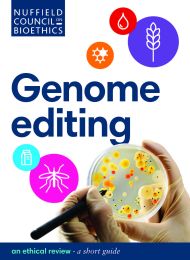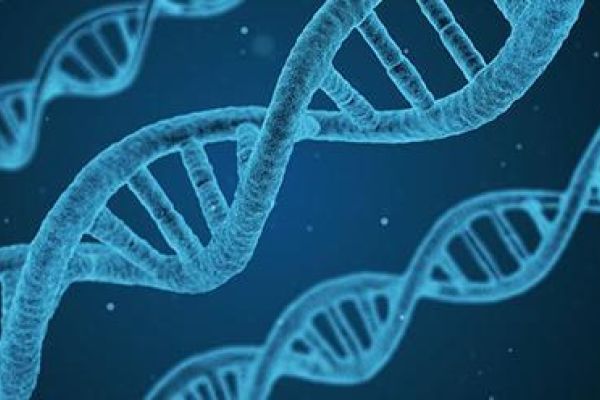Genome editing: an ethical review
Report
Published 30/09/2016

Other applications: industrial, military and amateur use
Microorganisms are more amenable to genetic modification than plants, animals and humans. Genome editing techniques (themselves derived from defence mechanisms in bacteria) provide new tools for modifying bacteria to achieve production of fuel, chemicals and proteins for a variety of uses.
Industrial applications
Industrial applications of genome editing in bacteria include the production of fossil fuel alternatives, food additives and flavourings, antibiotics, herbicides and vaccine production. Potential benefits of this method of production include fast turn-around times and the use of cheap supply materials (even waste products in some cases).
Amateur applications
The comparatively low cost, ease of use and availability of online kits making use of genome editing technologies mean they are accessible to amateur users outside of regulated industrial and academic environments. These may include DIY ‘garage’ scientists, school and undergraduate students (e.g. in biology competitions), and others with an interest in biological research and the possibilities – whether potentially beneficial or harmful – raised by genome editing.
Ethical considerations: biosafety
Genome-edited organisms (as with all genetically modified organisms or GMOs) pose a possible risk of harm to those handling them, and to others or to natural ecosystems if they are released or escape from controlled environments.
Most countries have layers of regulation which cover the handling, transport and release of GMOs, but there are concerns about how these can be managed outside of regulated environments, for example in countries with less well-developed structures, and by individuals who are not disciplined with regard to health and safety procedures.
Military applications
Military interest in the applications of genome editing may be focussed on its potential for defence purposes, for example to counteract the release of a harmful substance to a population.
There is also speculative interest in the possibility that genome editing may one day have a role to play in the selecting or enhancing of military personnel in relation to genetic susceptibility to disease or improved physical fitness.
Ethical considerations: dual-use
Research that has both civilian uses and a significant potential for military (or terrorist) use is known as ‘dual use research of concern’. The possibility of genome editing being put to harmful uses, for example in the production of bacteria intended to cause disease outbreak, is recognised by many countries as a threat to national security.
Controls on access to certain materials, and policies for monitoring and recording research, aim to address this, but it may be the case that these sorts of measures need to be enhanced, particularly because suppliers of genome editing kits and materials are not currently required to carry out any checks on the people who purchase their products.

Share